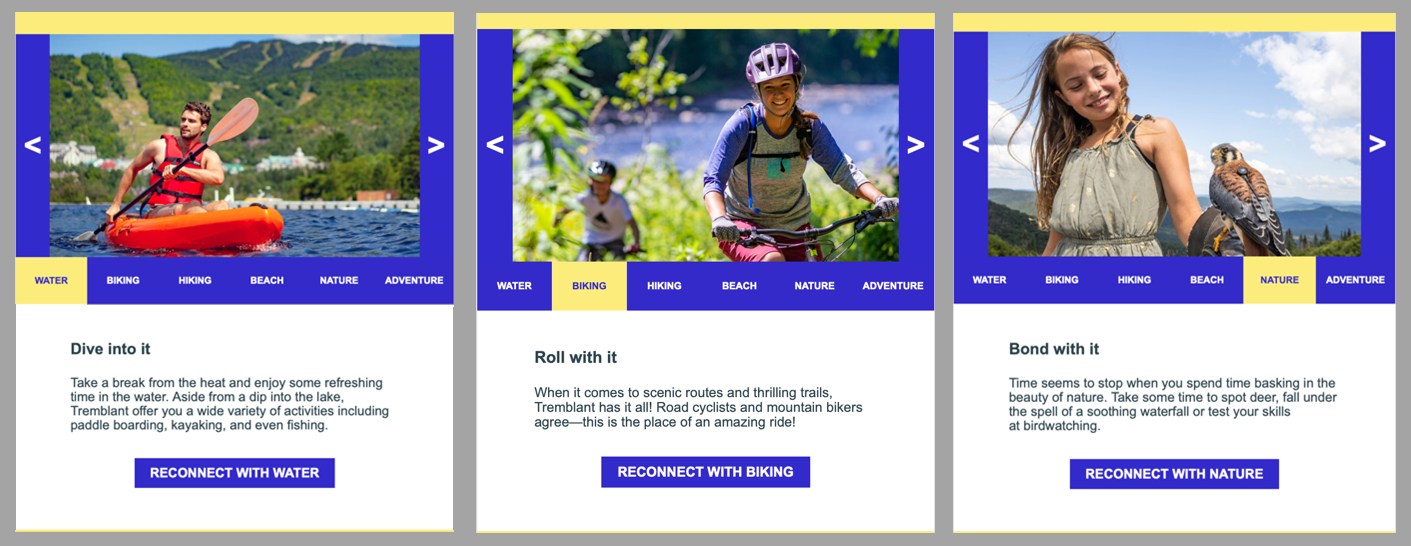Stop boring your customers with irrelevant content. Give them what they want!
We all know that consumers expect and demand a more personalized customer experience. They want emails that are relevant to their interests, needs and aspirations. The challenge is that the data required to personalize is often missing or incomplete. So, what can we do to backfill missing data to make our emails smarter, more personalized and more relevant?
The solution is simple. Just ask your customers! Or more precisely, pay close attention to your customers’ engagement signals—and more specifically clicks. This low friction approach is far more effective than asking your customers to fill out their interests in your email preference center.
But to get there we need to reset our thinking about email content. Here’s the thing: we often get caught up in the principle of one email, one message. We forget that by offering diverse content around a common topic, we can learn a lot more about what matters most.
Pay attention to their engagement behavior
To do this, use an email with multiple topics that allow customers to click to learn more about what gets them most excited. It could be item categories like shoes, boots, handbags and gloves. Or interests, pastimes, and priorities. Each topic must include a trackable link to content on your website. You set up link tracking to assign a topic value to each click
You then use the link clicks to publish the topic of interest to your customers’ profile. Use this data to trigger emails with deeper, more complete information on the experience of interest to reinforce what they’ve seen on the website, point to additional details and trigger interest-specific offers.
 Give your customers choices
Give your customers choices
For example, one of our clients—Mont Tremblant—is in the very challenging hospitality industry. They know that customers travel for a variety of reasons: relaxation, reconnection, discovery, or to challenge themselves physically, etc. So, customizing content based on travel motivation is essential to creating a message that resonates.
They also know that what people want to do while on vacation varies as well. Summer is a time for biking and beach time, watersports, and nature walks. But not everyone wants to spend a day on a paddleboard, climb a mountain, or cycle 50km under a blazing sun. An activity that is a passion for one guest may be torture for another.
To help customize our emails to the ultimate vacation experience for each guest, our client created a post pandemic “reconnect with summer” email series. The series focuses on topics like who you’re planning to travel with, what is your summer passion, etc.
To be afraid of interactive content
In one of the emails, we used an interactive “click-to-image” carousel to feature a series of summer sports and activities. The topic buttons have a mouse-over effect that switches color as the guest interacts with them. The description, image and button switch as you toggle through each topic. You can also advance using the left and right arrows. An automated program then captures the button clicks and converts them into “interest” values which are added to the customer profile.
Tremblant uses this data to customize email content, trigger an interest-specific email or prioritize the order in which content may appears in a newsletter or promotional email.

Note: This click-to-image carousel application works on all email clients that support “checked” radio button state…but not with Outlook. Each image and CTA has its own distinct URL as opposed to an animated Gif. And the text remains in text.
For those of you who are thinking, “but what about Outlook?”, simply create a fallback treatment for the carousel that display each activity as a distinct content block one after another in the email. The email is a bit longer, less compact, but it works all the same. Plus Outlook represents only 7% of email engagement, so we focus on the majority instead of limiting ourselves.
Embrace the gaps in your data
Of course, you won’t have data for everyone. Only for customers who engage with your content. Not a perfect solution obviously. But perfect is the enemy of good. And aren’t engaged customers the ones you want to focus your attention on anyway?
Start small and grow your preference data over time. Start with a topic that will have “legs”. Where the preference data can be used repeatedly for a full season, or maybe even for several years. More relevant and focused emails to a smaller but more engaged audience will pay for themselves many times over.
 Photo by Sylvester Sabo on Unsplash
Photo by Sylvester Sabo on Unsplash

 How to resolve AdBlock issue?
How to resolve AdBlock issue? 
